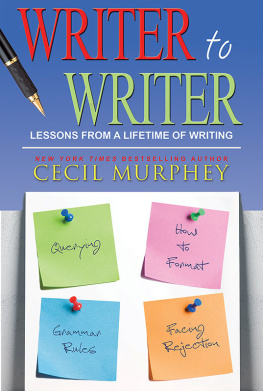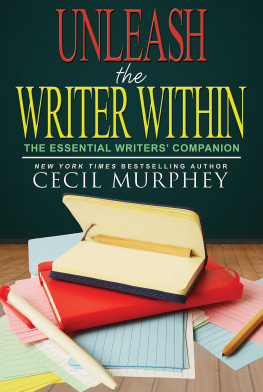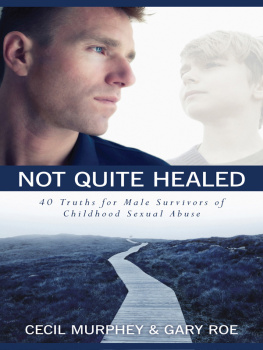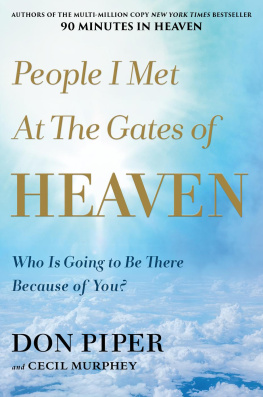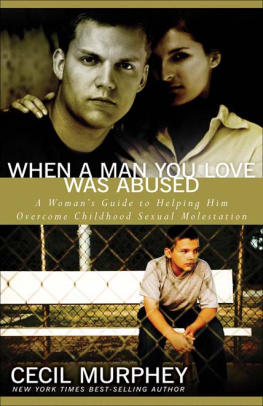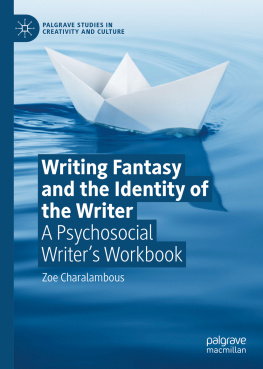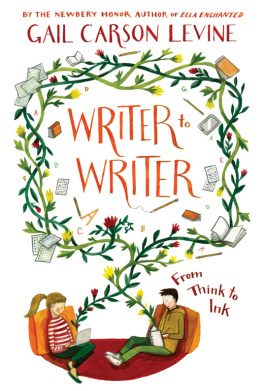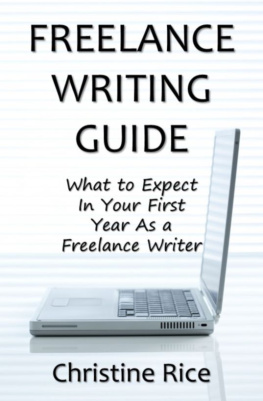Cecil Murphey - Writer to Writer: Lessons From a Lifetime of Writing
Here you can read online Cecil Murphey - Writer to Writer: Lessons From a Lifetime of Writing full text of the book (entire story) in english for free. Download pdf and epub, get meaning, cover and reviews about this ebook. year: 2015, publisher: TKA Distribution, genre: Home and family. Description of the work, (preface) as well as reviews are available. Best literature library LitArk.com created for fans of good reading and offers a wide selection of genres:
Romance novel
Science fiction
Adventure
Detective
Science
History
Home and family
Prose
Art
Politics
Computer
Non-fiction
Religion
Business
Children
Humor
Choose a favorite category and find really read worthwhile books. Enjoy immersion in the world of imagination, feel the emotions of the characters or learn something new for yourself, make an fascinating discovery.
- Book:Writer to Writer: Lessons From a Lifetime of Writing
- Author:
- Publisher:TKA Distribution
- Genre:
- Year:2015
- Rating:4 / 5
- Favourites:Add to favourites
- Your mark:
- 80
- 1
- 2
- 3
- 4
- 5
Writer to Writer: Lessons From a Lifetime of Writing: summary, description and annotation
We offer to read an annotation, description, summary or preface (depends on what the author of the book "Writer to Writer: Lessons From a Lifetime of Writing" wrote himself). If you haven't found the necessary information about the book — write in the comments, we will try to find it.
Writer to Writer: Lessons From a Lifetime of Writing — read online for free the complete book (whole text) full work
Below is the text of the book, divided by pages. System saving the place of the last page read, allows you to conveniently read the book "Writer to Writer: Lessons From a Lifetime of Writing" online for free, without having to search again every time where you left off. Put a bookmark, and you can go to the page where you finished reading at any time.
Font size:
Interval:
Bookmark:
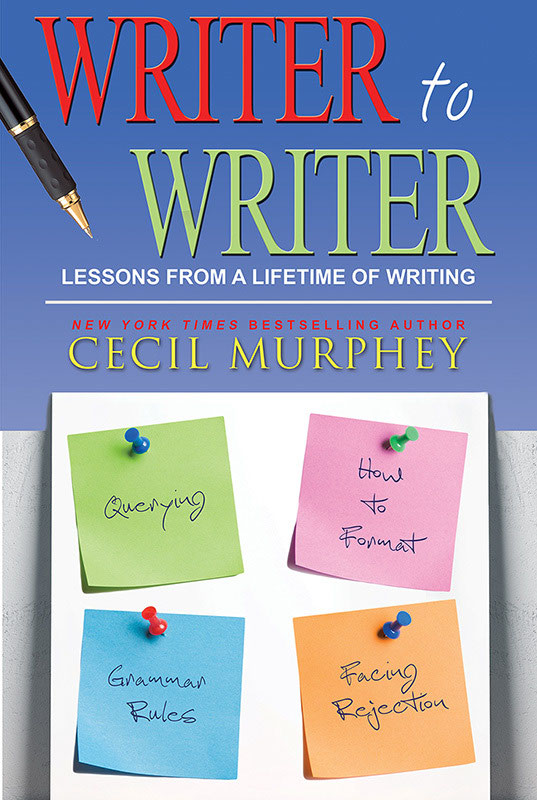

WRITER TO WRITER
Lessons from a Lifetime of Writing
Cecil Murphey
This isnt a grammar book.
This isnt a rulebook for writers.
This is an attempt to share the lessons Ive learned as a professional writer. Nothing else.
I cant recall when I didnt want to write. Although I tried to get published at age sixteen, I had nothing accepted until I was thirty-eight. By then, I had learned a few things about the publishing industry.
After I had sold at least twenty articles, I made a double commitment.
First, I promised God and myself that I would never stop learning and improving as a writer.
Second, I promised I would do whatever I could to help other writers.
Most of the material in Writer to Writer started as a blog in 2011. It represents my commitment to continue to improve and shows the results of my learning that have enabled me to partially fulfill the second part of the commitment.
For years, Ive cringed when I read shoddy writing in print, especially in those instances that would take little effort to improve the quality.
I want to help you become better; however, youll discover no easy path to writing success. Good writing demands self-discipline and constant learning.
Ive tried to keep each entry in Writer to Writer short and well illustrated. From my teaching experience in my own mentoring clinics, I figured out that receiving large globs of information over a period of two or three days has little effect.
Thats why I started the blog. By throwing about 200 to 300 words at writers twice a week, my assumption is that they would be able to absorb what they learned before moving on to the next blog entry.
Ive revised the blogs into a book with the same objective. Read an entry a day or five in a week. You can jump into the book any place you like and get the message in about two minutes each time.
I also confess that writing this book is a defensive action. My assistant, Twila Belk, and one of my writing cronies, Jim Rubart, urged me to share what Ive learned about writing. Hence, the tagline supplied by Jim: Lessons from a lifetime of writing.
Im still learning.
My goal is to send in manuscripts that make editors weep and tell me, I couldnt find a single thing to change. In the meantime, I pass on what Ive learned from my years of professional writing. I trust it will help you, too.

Unless you have established a relationship with an editor, you wont send a manuscript without permission.
We look for reasons to reject manuscripts, an editor-friend said.
I understood what she meant. Editors are overwhelmed, and their staffs are smaller these days. More people now try to write, and many of them send multiple submissions for the same article. Instead of getting 300 manuscripts a month as book publishers might have twenty years ago, those same publishers receive 300 a week.
Good editors easily eliminate a high percentage of the submissions without reading a word. They need only to look at the layout. Amateurs wont take time to learn to submit a book proposal properly, another editor complained.
Most publishers provide guidelines on their website. Despite that, a large number of articles and books come to publishers that show the writers havent followed their guidelines.
Think of it this way: If you send in a manuscript that deviates from the standard look, its enough to cause an editor to blink. The blink encourages the editor to put the pages in the reject basket.
I want to offer guidelines to help you get your manuscript read. This will avoid the initial rejection, and the editors might actually buy what youve submitted. The guidelines are easy to follow and simple to learn.
Double-space all manuscripts and leave a one-inch margin on all sides of the page. (This is automatic on most computers.) Dont insert extra blank lines between paragraphs.
Use a header on every page. On the left, the header contains your last name, slant or colon, and your title. Put the page number on the right. (I put my header in 9-point font so that it becomes less distracting.)
Its not wrong, but I suggest you avoid putting the header on the first page. Its simple to do. On your tool bar, go to, Insert. On the pull-down menu youll see Page Numbers. Delete the checkmark that says to start on page 1.
Indent every paragraph half an inch. (Set your tab key. In Word, you need to hit the space bar ten times to get half an inch.) Always use 12-point fonts. Many prefer non-serif fonts such as my favorite, Arial. Dont use italics, or difficult-to-read fonts. Times New Roman (TNR) is the most common and is the default font on Word. If the publishers guidelines dont tell you which font, TNR is a safe font.
Nonprofessionals insert the copyright symbol on the first page and some do it on every page. Editors know (even if writers dont) that the material is under common-law copyright when the piece is in a finished form.
Using the symbol is a not-so-subtle way to say to editors, Im afraid youll steal my words, so this is my warning. As one editor told me, Those who use the copyright symbol rarely have to worry about anyone wanting to steal from them. Their writing is usually terrible.
The normal format for manuscripts has been standard for many years.
In the upper left corner of the first page, single space on separate lines, your name, address, phone number, and email address. (Im amazed at the people who dont show editors how to contact them.)
Across from your name, in the upper right, give anestimatedword count, rounded off to the nearest 50. To write 937 words is not an estimate, but 950 is. Even a small thing like that shouts Beginner.
On the next line, put the rights you want to sell. For articles, this will usually be first rights. (First rightsmean that after they have published it once, its yours to resell.) The top of your first page, the only single spacing you do in an article, will look like this:

Once youve put in your information at the top of the page, go down about 1/3 of the page and center the title. (I usually begin at 3.8 inches or four inches, but the exact number isnt important.) That empty space between your personal information and the title of the article is reserved for the editor. Dont put anything in that space.
Font size:
Interval:
Bookmark:
Similar books «Writer to Writer: Lessons From a Lifetime of Writing»
Look at similar books to Writer to Writer: Lessons From a Lifetime of Writing. We have selected literature similar in name and meaning in the hope of providing readers with more options to find new, interesting, not yet read works.
Discussion, reviews of the book Writer to Writer: Lessons From a Lifetime of Writing and just readers' own opinions. Leave your comments, write what you think about the work, its meaning or the main characters. Specify what exactly you liked and what you didn't like, and why you think so.

